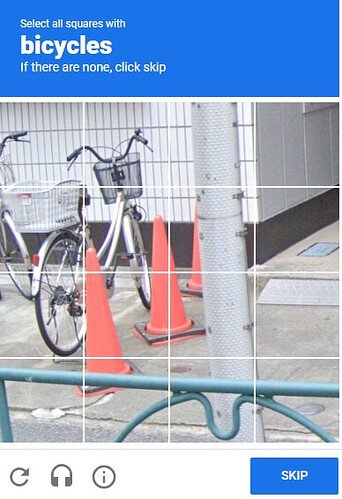AI - Why All the Hype? - Cutting through the Noise
With all the hype and jargon surrounding AI, it’s easy to dismiss it as just another buzzword—an old concept repackaged to grab attention. But beyond the noise lies a transformative force that is reshaping our world. Understanding this seismic shift is not only essential but also pivotal to seizing the once-in-a-generation opportunities it presents and avoiding the risks of being left behind.
This article aims to cut through the noise to explain exactly what it is and why it’s so pivotal now.
The Four Phases of Technological Transformation
Pre-1995: The Era of Mainframes and Corporate Networks During this period, data sharing was confined to mainframes and corporate networks, enabling businesses to share and transmit data internally. It laid the foundation for modern computing.
1995–2005: The Internet Explosion The advent of the internet revolutionized global connectivity. For the first time, data could be shared across all computers worldwide, creating unprecedented opportunities for collaboration and communication.
2005–2015: The Rise of Smartphones and the Cloud This era brought the power of smartphones and cloud computing, connecting businesses to customers in a way that had never been possible. Data capture and dissemination increased dramatically, empowering businesses to operate seamlessly.
2015 Onwards: The Networks and AI Era Today, networks and AI are the defining forces. These technologies have introduced automation and intelligence into systems, changing how we live, work, and interact.
What is Artificial Intelligence?
Artificial intelligence is often misunderstood. While many think of AI as computers matching or surpassing human intellect, its true definition is broader: any activity performed by a computer that humans once performed.
At its heart lies machine learning—a process where, under human guidance, machines teach themselves. Imagine training a computer to identify bicycles in photographs. Instead of manually writing the algorithm, you can let the machine learn by employing either:
Supervised Learning: Humans label photos with or without bicycles, allowing the computer to refine its algorithm to match human responses.
Unsupervised Learning: The computer clusters photos into categories, and humans define these categories, enabling the computer to adjust accordingly.
A familiar example is CAPTCHA tests. When we identify traffic lights or bicycles in images, we're training computers. Interestingly, the test determines our humanity not by our answers but by how our mouse moves—humans move erratically, while robots follow straight, uniform paths.
The Rise of Machine Learning and its Impacts
Though the concept of machine learning has existed for decades, its adoption was hindered by the immense processing power required. Today, exponentially improved computing power has significantly lowered the cost of AI, making it accessible to all.
Billion-dollar companies like Spotify, Amazon, and Netflix use machine learning to suggest songs, products, or movies based on user trends. Notably, Amazon's algorithm famously predicted a customer's pregnancy based on subtle changes in grocery purchases—even before the customer herself knew!
So why is AI receiving such widespread attention now, almost a decade after these companies began leveraging it? The answer lies in affordability and accessibility. The explosive growth in computing power has democratized AI, putting this revolutionary technology within reach of individuals and small businesses alike.
The AI Revolution: A Parallel to the Computing and Internet Revolutions
AI today mirrors the seismic shifts brought by the computing and internet revolutions. Like its predecessors, AI inspires a mix of fear, caution, hope, and excitement. However, one thing is certain—ignoring it is not an option. Businesses that fail to embrace AI risk falling behind, just as those who resisted computers and the internet were left in the dust.
Think of it this way: the computing power in a basic Casio calculator surpasses the Apollo Guidance Computer that landed humans on the moon. Similarly, tools like Co-Pilot and ChatGPT have become as powerful as the AI that propelled companies like Netflix, Amazon, and Spotify into global dominance. The possibilities are limitless, but only for those willing to adapt and innovate.
What does this mean for Construction?
The construction industry, like all others, is on the brink of profound transformation. Some companies will thrive like Netflix, while others may falter like Blockbuster—survival will hinge on an organization's willingness to embrace change. The AI revolution is nothing short of revolutionary.
In this new era, the standout innovators are 'AI First companies.' These organizations differ fundamentally from traditional companies. In a traditional setup, data is fragmented across departments and projects, with each unit controlling its own data capture, reporting, and decision-making processes. By contrast, AI First companies centralize their data, train machine learning models on a unified dataset, and generate insights that benefit all departments. This shift demands a complete overhaul of traditional corporate structures—a transition that is as challenging as it is critical.
Jeff Bezos foresaw this monumental change all the way back in 2002 when he penned his now-famous mandate, recognizing the need for a bold, centralized approach to data and decision-making. The message is clear: in the era of AI, adaptability and innovation are not optional. As organizations navigate this revolution, the choice is stark—be bold or be left behind.
To survive the AI revolution, and better yet to thrive in the AI revolution, the transformation must start now. The below graph shows a 4-step process to reach the end goal while providing incremental value along the way.




